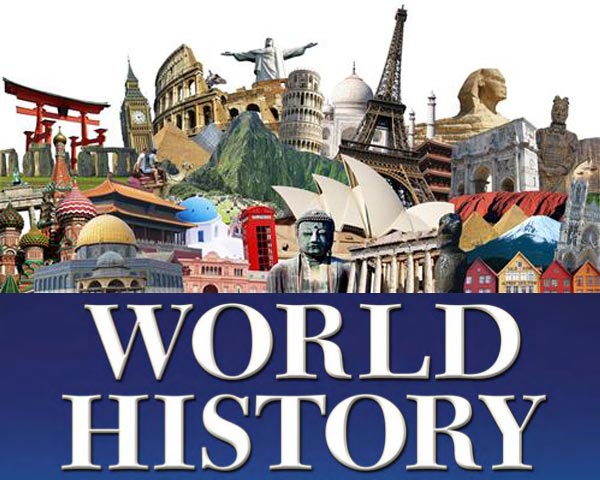
What is World History?
World history is the extensive study of humanity’s past across the globe. It examines how diverse cultures and societies have changed and evolved over time. Students explore world history thematically by learning about pivotal topics like trade, religion, politics, revolutions, technology, and war. By analyzing historical evidence, artifacts, and narratives, we can better understand the interconnectedness and interactions of human civilizations across eras.
A grasp of world history is essential to comprehending the complexity of modern societies as well as how we arrived at the present day. The study of world history enables students to critically evaluate claims about history, recognize patterns of change over time, and appreciate the diverse experiences of people in the past. It provides important context for current affairs and offers lessons from humanity’s prior mistakes and accomplishments.
Though daunting in scope, world history is a deeply enriching field of study.
What do students learn from World History?
Students learn a wide range of concepts and skills from social studies, including:
History: Students learn about the past and how it has shaped the world we live in today. They learn about significant events, people, and places from different eras and cultures.
Geography: Students learn about the physical and human characteristics of the Earth’s surface. They learn about different regions, countries, and cultures, as well as the interactions between people and their environment.
Economics: Students learn about how goods and services are produced, distributed, and consumed. They also learn about the role of money, markets, and governments in the economy.
Politics and government: Students learn about the structures and functions of government at the local, state, and national levels. They also learn about the rights and responsibilities of citizens in a democracy.
Sociology and anthropology: Students learn about social structures, groups, and institutions, and how they shape human behavior. They also learn about cultural diversity and how to appreciate and respect differences among people.
Overall, social studies education is designed to help students become informed, active, and responsible citizens who are able to engage with the world around them in a thoughtful and meaningful way.
Courses (2)
I have designed and developed curriculum for two world history courses aimed at students of different ages. The first is a comprehensive World History course for older students between 11 and 18 years old. The second is The Story of The World, a world history course tailored for young learners from 6 to 12 years old. My expertise lies in adapting world history content and pedagogy for both adolescent and elementary-aged students.

World History: Patterns of Interaction

World History: Patterns of Interaction by McDougal Littell is a comprehensive world history textbook typically used at the high school level.
First published in 1986, it has been revised and updated over multiple editions while maintaining its readability and engaging narrative style.
The book examines world history thematically by focusing on topics such as culture, religion, politics, economics, exploration, and technology.
It aims to help students recognize important patterns, connections, and interactions between civilizations across different time periods and geographic regions.
The text incorporates primary source documents, maps, timelines, and other visual elements to aid comprehension. Review questions, critical thinking exercises, and student activities reinforce key concepts.
World History: Patterns of Interaction stands out for its focus on the overarching themes and global connections that have shaped humanity’s collective story over the centuries.
It is a popular choice for high school world history classes across the United States.
The Story of The World - Susan Wise Bauer

The Story of the World is an award-winning series of narrative history textbooks by Susan Wise Bauer aimed at elementary school students.
First published in 2001, the series covers the global past from ancient times up to the 2000s across four volumes – Volume 1: Ancient Times, Volume 2: The Middle Ages, Volume 3: Early Modern Times, and Volume 4: The Modern Age.
The books utilize engaging storytelling, complemented by illustrations, maps, timelines, and information boxes, to convey world history in a cohesive, chronological format appropriate for young learners.
The volumes trace how civilizations and societies across the world developed and interacted with one another. They highlight connections between cultures while also providing geographic and historical context.
The text is written in an accessible style to pique students’ interest.
Critical thinking questions, activities, craft projects, and lesson plans in the accompanying guides enrich comprehension and retention.
The curriculum helps students recognize historical concepts like change, continuity, and causation.
Review quizzes and tests are included to assess student progress.
First developed as a resource for homeschooling parents, The Story of the World has become popular in public and private schools alike for its creativity and integrated approach.
It is lauded for its ability to bring history to life for elementary students and cultivate a passion for the subject.
The series stands out as a unique and engaging world history program for young learners.
